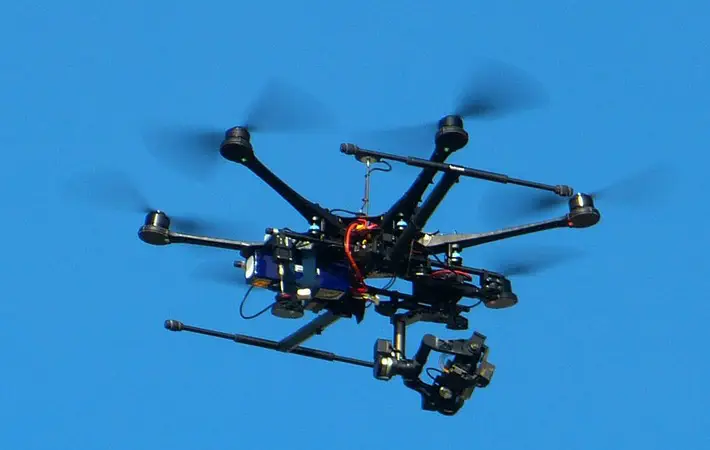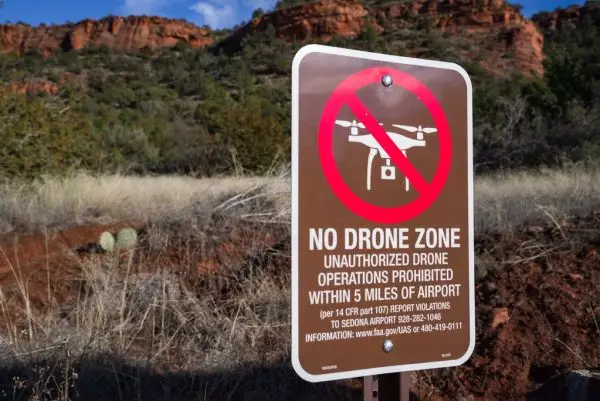Guidelines for ATCOs (1/3)
Introduction
The objective of this discussion and guidance material is to promote and uphold a high standard of knowledge and professional efficiency among Air Traffic Controllers. This document is for: distribution to IFATCA Member Associations and ATCOs; as guidance for IFATCAs’ representatives; and for public dissemination. The guidance material focusses on drones operating very-low-level (e.g. not above 400 ft AGL) near controlled airports, generally within controlled airspace, and either or .
This guidance material complements the IFALPA/IFATCA Drone Sighting Guidelines published 29 August 2018. It also aligns with IFATCA’s policy statements on the operational use of un-crewed aircraft.

Problem statement: The number of drone sightings by pilots and ATCOs and related airprox reports continues to rise. There have been numerous cases of airspace and aerodrome closures due to drones in the vicinity. Many countries do not yet have standard procedures to deal with drone sightings near aerodromes or violations of controlled airspace. Additionally, ATCOs are being asked to assess requests by drone operators for access to ICAO airspace when the rules of the air do not support such access nor provide separation minima for ATC to apply between drones and conventionally piloted (crewed) aircraft (CPA). IFATCA policy: ATCOs shall not be held liable for incidents or accidents resulting from the operations of RPAS that are not in compliance with ICAO requirements, in non-segregated airspace .
General notes
1. The scope of ICAO’s work is currently limited to: ‘certificated RPAS operating internationally within controlled airspace under instrument flight rules (IFR) in non-segregated airspace and at aerodromes in the 2031 onward timeframe ’. ICAO will expand this scope where evidence indicates unanticipated needs resulting from market growth, technology advances or other unforeseen conditions. ICAO does not consider: fully autonomous aircraft and operations; visual line-of-sight; very low altitude airspace operations (although ICAO has an advisory group: UAS-AG); very high altitude operations; the carriage of persons; non-international operations; as well as
2. The four main requirements for Un-crewed Aircraft System (UAS)-ATM integration are:
- The integration of UAS shall not imply a significant impact on current users of the airspace;
- UAS shall comply with the existing and future regulations and procedures laid out for crewed aviation;
- UAS integration shall not compromise existing aviation safety levels nor increase risk more than an equivalent increase in crewed aviation would.
- UAS operations shall be conducted in the same way as those of crewed aircraft and shall be seen as equivalent by ATC and other airspace users.
3. As of early 2019, Standards and Recommended Practices (SARPs) do not cover the following areas, therefore, the following information is provided by IFATCA to assist MAs and ATCOs in decision-making processes in these areas.

4. During VLOS, the Remote Pilot (RP) maintains direct unaided visual contact with the drone to maintain separation and avoid collisions/hazards. As yet, no reliable airborne nor ground-based detect and avoid technology exists to install on small drones, so avoiding other airspace users (cooperative and non-cooperative drones or conventionally piloted aircraft) and airspace hazards (as well as other risks from obstacles, terrain, weather, birds) in BVLOS is problematic.
5. The operation of drones relies predominantly on either C2links or pre-programmed automation. When this link is sporadic or fails, i.e. a ‘lost’ C2 link, a fully autonomous flight results whereby the operator/pilot cannot interact with the drone. Also, as
6. Eventually, an accurate picture of the consequences of a drone colliding with a CPA will be available through damage assessments and other ongoing work. Until these are complete and proven to be accurate, it is assumed the outcome of a mid-air–collision with a drone will be either Hazardous (Value A) or Catastrophic (Value B) as per the ICAO Doc. 9859: Safety Management Manual , possibly penetrating the cockpit or impacting with a helicopter’s rotor. Any collision should be avoided and this responsibility presently lies with the RP. It is generally accepted that drones under 250 gms are harmless. Training and simulation events for both pilots and ATCOs in coping with such scenarios is highly recommended.
7. Drones entering controlled airspace and operating near controlled airports, change the level of safety risk. This triggers a need to measure, understand and assess the change. For example, IFR flights provided with an ATC control service in controlled airspace have an expectation of full separation from other airspace users. This includes helicopter landing sites, water runways, etc. with no control tower. This expectation of full separation can be misleading as there could now be numerous drones operating in the vicinity of the landing site, either known or unknown to ATC; separated, segregated or not, as the case may be. An overall safety and risk assessment for all hazards so far identified with regard to RPAS operations
8. Drones that may be operating legally under the regulations of several States’ (e.g. not above 400 ft AGL, marginally outside exclusion zones) may potentially still be in near proximity to CPA operations, i.e. the approach path, or the departure path for IFR flights. These no-drone-zones may generally protect large numbers of IFR flights such as those via the ILS. However, not all traffic is perfectly aligned with the
9. Other technology deemed to support robust mitigations to the safety risk of drones operating in controlled airspace needs continued attention. Continued research is essential in the area of drone-detection systems (civil use technology for countering drones), geo-fencing, electronic conspicuity, and drone registration, among other topics. IFATCA policy: IFATCA urges the development and implementation of technology to prevent airspace infringements by Un-crewed Aircraft .
10. Wake turbulence and downwash: drones, which are much lighter than most CPA, are particularly vulnerable. Wake turbulence is a very real hazard for drones and can trigger an unrecoverable attitude, loss of propulsion, loss of lift, or instability, which could subsequently lead to a ground collision or a deviation from the ‘authorized’ flight path. The response times by the RP in upset recovery are exacerbated (delayed) by latency in corrective control instructions through C2 links.
11. Safety approach: the vast majority of drones are uncertified, operate without airworthiness approvals, the historical safety data is unavailable, and operators are often not from aviation backgrounds. Drones are unable to interact with other airspace users (e.g. ACAS is not designed for drones ). their performance is significantly different from CPA, and they have no vision from the cockpit. Therefore contemporary approaches to safety risk management have appeared that address risk by limiting operational parameters, such as the JARUS instigated Specific Operations Risk Assessment (SORA). Albeit robust, these philosophies are moving from infancy to operational implementation and their efficacy is as yet unproven.
12. Communicators with RPs: MAs have reported that for some drone operator’s, the operation of VHF transceivers is unreliable, for example, background noise from wind and the din from nearby cars, the RP’s location on the ground distant from ATC VHF radio farms affecting radio line of sight (RLOS) limiting communication. Traditionally, ATCOs don’t rely on mobile phones as a primary means of communicating with airspace users, whereas this is often the only option for even urgent communications with RPs, whereas it does not have the reliability required to support airspace Required Communication Performance and therefore separation minima, etc.
13. The validity of reports of sightings of drones from pilots, the public, etc. needs to be scrutineered. Individual estimations of size, location and distance may vary depending on many factors, or may even be false.
14. The management of flights at very-low-levels (commonly not above 400 ft AGL) is planned to be through UTM or U-Space. In response to the vast number of flights expected, these services will often be fully automated and will have interfaces with ATC and ATM systems. Early UTM systems will require segregated airspace as ICAO classification of airspace (i.e. class A to E) is not appropriate. There is also broad industry acceptance that the airspace below 400 ft is free of CPA, and therefore entirely available to drone users and that the lowest VFR altitude of 500 ft as per Annex 2 provides a natural buffer. When considering emergency helicopters, MIL training, gliding, visual flights, etc., this is, of course, incorrect; and, additionally, a 100 ft buffer is not suitable. Further discussion is available in IFATCA’s White Paper: Operational Use of Un-crewed Aircraft (including Remotely Piloted Aircraft Systems) .
15. MAs have reported the inclusion of an ATCO service as a safety risk mitigation to permit otherwise unacceptable risk in various operational scenarios (such as BVLOS, no Detect and Avoid/DAA) as an alternative means of complying with rules of the air. Care should be taken when ATC might be asked to:
- track the drone on surveillance during lost C2 link. Knowledge of the actual position is more important when there is no pilot on board;
- provide traffic information to the operator/RP on surveillance observed traffic;
- provide traffic information to CPA about drones;
- replace the ‘rules of the air need’ for a full detect and avoid collision avoidance from non-cooperative traffic [i.e. due to a violation of CTA, or an aircraft with an SSR failure/no Mode C].
16. Several Member States have tailored drone operating areas within controlled airspace (example: the FAA LAANC). There is still the possibility that drones might fly-away (lost C2 link), conflicting with other traffic, and procedures for minimising the impact of such scenarios must be considered (such as recording the maximum possible flight endurance notated by the RP at the beginning of every drone sortie, so that the aerodrome can be reopened after propulsion has expired and the risk no longer exists). Alternatively, conventional aircraft may inadvertently violate the airspace containing the grids where drones are operating.
17. Remotely piloted drones with passengers (i.e. urban air mobility) are excluded from this guidance. The consequences of drone flight into terrain is less than for CPA with no people on board, whereas this is not the case for automated taxis and similar concepts with people on board.
Continue to part 2 for scenarios
©2019 The International Federation of Air Traffic Controllers’ Associations.
This publication is for your information only.
In all cases, ATCOs should follow their company’s guidance and procedures. In the interest of safety, reproduction in whole or in part is encouraged. All reproductions must credit IFATCA. This publication may not be sold or used commercially.




